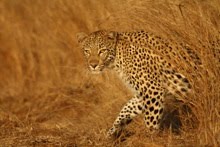
Time and practice has meant that I am a little faster at finding subjects accurately through my scope, and getting good focus. But I have also learnt a whole lot more about choosing my subject and positioning myself to get the best possible light. And I have also learnt to take my digiscoping equipment wherever I go so that I have the maximum chance of bumping in to something fortuitously.
And when the light is not good, I just look through the scope at the pretty birdy.
Well, I do have a scope with me anyway ;-)
My regular digiscoping setup includes a swarovski 80mm angled scope, either a 30x wide angle ocular or a zoom, and my point and shoot Canon A590IS. I must admit that I am not completely satisfied with the Canon A590IS. I continue to struggle to get really sharp images even without the a huge big telescope strapped to the front of the camera. The weak lens (or whatever the issue is) is particularly evident when you use the zoom. I learnt the hard way; when digiscoping or digibinning, don't use the zoom on this camera, it is just not worth it.
Digiscoping birds in flight has been particularly challenging. Using an angled telescope has the added challenge of not having the viewing and photographing angles the same, that added to the fact that compact digital cameras have rather slow shutter response and repeat times, and losing the subject bird from the screen once a photo is taken, even for a split second - enough to lose a flying bird from view.
One method I found for photographing birds in flight was to maximise shutter speed by using the largest aperture available (smallest number), focus on an area through which the birds frequently fly (a flight path) and blast the shutter off whenever the birds are anywhere near. If you try enough times, you are bound to end up with something eventually.
For the Black Kite series, I was using a different setup that made following and photographing flying birds a whole lot easier...

 I was using a Canon EOS 350D attached directly to a Swarovski 80HD straight telescope using Swarovski's TLS800 digiscoping adaptor. I still had to focus by hand, but it felt a whole lot more like a telephoto lens in the hand than anything else I have used for digiscoping. Because of the large focal length, it can be difficult to get enough light, so I tend to pump the ISO up a little bit to get a better shutter speed. With a shutter speed of 1/200sec I am usually confident enough to swing the setup about hand-held and see what I can get. Makes for lots of fun.
I was using a Canon EOS 350D attached directly to a Swarovski 80HD straight telescope using Swarovski's TLS800 digiscoping adaptor. I still had to focus by hand, but it felt a whole lot more like a telephoto lens in the hand than anything else I have used for digiscoping. Because of the large focal length, it can be difficult to get enough light, so I tend to pump the ISO up a little bit to get a better shutter speed. With a shutter speed of 1/200sec I am usually confident enough to swing the setup about hand-held and see what I can get. Makes for lots of fun.The thing I am still struggling with is getting good focus as the focus is entirely manual, putting a lot of pressure on the photographer. But it is getting better, the more I use it. I don't think I will switch over to this digiscoping method - as I still prefer the ability to get the camera out of the way and use the spotting scope for viewing - but it is nice to play with, and I am sure that those who are less focused on bird viewing love it.
here are a couple more black kite photos that I digiscoped yesterday. they are not great, but I kinda like them. And, I have a real thing for the Milvus kites, so please excuse my harping on...



Happy birding
Dale Forbes






.jpg)



.jpg)








.jpg)



5 comments:
Birds in flight even with fast dSLR and lenses is never easy, but have done great with digiscope here.
Hello Dale. This process seems like quite a challenge but interesting too.
Thanks for visiting my blog today. You are a far way from home aren't you.")
wonderfull,we wait another photos,best regards.
Digiscoping with a DSLR, now that's something which not many people do. Your setup looks more like a 600mm lens mounted on the DSLR.
It would be interesting to see the results as you get more used to this combination, Good Luck...Thomas
hi Thomas, that is exactly what it is. the adaptor is designed to create an 800mm telephoto lens out of a telescope.
I suppose more people dont use it because:
1. they have not heard of it
2. manual focus is hard (and we have all forgotten how we did it 15years ago ;-)
3. Birders like to use their telescope to look at birds and take the occasional photo, not the other way round (well, at least that is the case some of the time)
Post a Comment